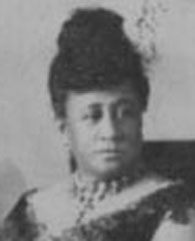|
| |
Aia i Nu`uanu ko lei nani
Haku `ia mail la e ke Ki`owao
Ua nani ka noho a Waipuhia
Wehiwehi Lanihuli i ke kawelu
Pau`ole ke onaona o Kekele
Hanohano o Waolani i ke Ehu wai
He aloha ia wai anu i ka `ili
Ha`ina ke ali`i nona ka lei |
There in Nu`uanu is your
beautiful lei
That is woven by the Ki`owao
wind
Beautiful is the resting place
of Waipuhia wind Adorned is Lanihuli in the wind
blown grass Endless is the fragrance of
Kekele Glorious is Waolani in the
`Ehuwai wind Love to the water that is cold to the skin Answering is the chiefess whose
lei it is
|
|
Source: Queen Kapiolani by Maili Yardley & Miriam Rogers, Translated by Theodore Kelsey - This name song for Kapi`olani describes Nu`uanu Valley. Jennie Wilson said the proper name for the Pali is Lele-a-`anae. Ki`owao is the name of the cliffs on the Kalihi side of Lihau, and also the name of the wind at the Pali. It is a gentle land breeze and also, a stationery heavy fog that becomes a cloudburst. Kamaakahala is another name for the male hala flower also known as hinano. Waipuhi (wind-blown water) is the name of the Upside Down Waterfall. Palai, short for palapalai fern is symbolic of pubic hair. Lanihuli is the highest peak at the Pali. Kekele is the stream and the area at Waipuhi, below the Pali lookout. Puloku means a place to bathe and lie on the land. |
|
